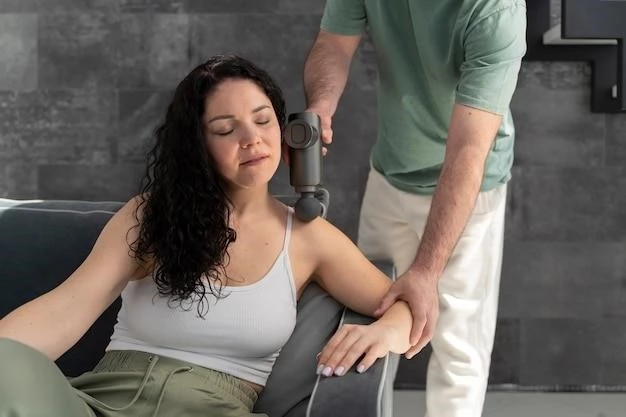Introduction to Spastic Paraplegia Neuropathy Poikiloderma
In a family of Portuguese extraction, a disorder was described with spastic paraplegia, neuropathy, and poikiloderma, affecting multiple generations. Learn more about this complex syndrome.
Definition and Overview
Spastic paraplegia neuropathy poikiloderma is a rare genetic disorder characterized by spastic paraplegia, peripheral neuropathy, and poikiloderma, a skin condition. This syndrome affects multiple generations of families and presents challenges in diagnosis and management.
Clinical Presentation of the Disease
Individuals with spastic paraplegia neuropathy poikiloderma may experience symptoms such as spasticity, peripheral neuropathy, and skin abnormalities like poikiloderma. Understanding these manifestations is crucial for timely diagnosis and appropriate management.
Symptoms and Manifestations
Individuals with spastic paraplegia neuropathy poikiloderma may present with a combination of symptoms including spasticity, peripheral neuropathy, and skin abnormalities like poikiloderma. It is essential to recognize these signs early on for effective diagnosis and management.
Diagnostic Challenges
Diagnosing spastic paraplegia neuropathy poikiloderma can be challenging due to its rarity and overlapping symptoms with other conditions. Healthcare providers may face difficulties in accurately identifying the syndrome, highlighting the importance of consulting specialists in the field and utilizing advanced diagnostic techniques to confirm the diagnosis.
Genetic Basis of Spastic Paraplegia Neuropathy Poikiloderma
The genetic basis of spastic paraplegia neuropathy poikiloderma involves a rare hereditary syndrome characterized by spastic paraplegia, peripheral neuropathy, and poikiloderma. Understanding the genetic factors contributing to this syndrome is essential for diagnosis and management.
Hereditary Factors
Spastic paraplegia neuropathy poikiloderma is a hereditary syndrome associated with autosomal dominant inheritance and complete penetrance. Understanding the genetic factors involved is crucial in diagnosing and managing this complex condition.
Inheritance Patterns
Spastic paraplegia neuropathy poikiloderma follows an inheritance pattern that suggests autosomal dominant transmission with complete penetrance. Understanding the genetic inheritance of this syndrome is crucial for accurate diagnosis and family counseling.
Understanding the Pathophysiology
Spastic paraplegia neuropathy poikiloderma involves a complex interplay of neurological and dermatological manifestations, manifesting as spasticity, peripheral neuropathy, and skin abnormalities like poikiloderma. Delve into the intricate molecular mechanisms underlying this syndrome for a comprehensive understanding.
Neurological Implications
Neurological implications of spastic paraplegia neuropathy poikiloderma involve complex symptoms such as spasticity, peripheral neuropathy, and potential motor and sensory dysfunction. Understanding the neurological aspects of this syndrome is crucial for comprehensive management and care.
Skin Disorders Associated
The skin abnormalities associated with spastic paraplegia neuropathy poikiloderma include poikiloderma, a condition characterized by delicate, smooth, and wasted skin, along with the loss of eyebrows and eyelashes in childhood. Understanding the dermatological aspects of this syndrome is crucial for comprehensive care and management.
Effective management strategies are crucial for addressing the symptoms of spastic paraplegia neuropathy poikiloderma. Understanding the available therapeutic approaches tailored to individual needs is essential for optimizing care and improving quality of life.
Available Treatment Options
Effective management strategies are crucial for addressing the symptoms of spastic paraplegia neuropathy poikiloderma. Understanding the available therapeutic approaches tailored to individual needs is essential for optimizing care and improving quality of life.
Therapeutic Approaches
The treatment of spastic paraplegia neuropathy poikiloderma involves a multidisciplinary approach aimed at managing neurological symptoms, peripheral neuropathy, and skin manifestations. Therapeutic strategies may include physical therapy to improve mobility, medication to manage spasticity, and dermatological interventions for skin abnormalities. Collaborating with specialists can help tailor treatment plans to address the diverse aspects of this complex syndrome effectively.
Stay updated on the latest research and advancements in understanding spastic paraplegia neuropathy poikiloderma. Explore recent discoveries and ongoing clinical trials to stay informed about progress in the field.
Recent Discoveries
Recent research on spastic paraplegia neuropathy poikiloderma has focused on understanding the genetic and molecular basis of the syndrome. Advances in molecular genetics have helped uncover the involvement of specific genes and pathways in the development of this complex condition. Stay informed about the latest discoveries in the field to better grasp the underlying mechanisms and potential treatment targets for this rare disorder.
Research and Advancements in the Field
Stay informed about the latest research and advancements in understanding spastic paraplegia neuropathy poikiloderma. Explore recent discoveries and ongoing clinical trials to deepen your knowledge and stay abreast of progress in this field.
Understanding the impact of spastic paraplegia neuropathy poikiloderma on patients and families is crucial. It is essential to consider quality of life aspects and psychological support needs while navigating the challenges posed by this complex syndrome.
Quality of Life Considerations
Addressing the impact of spastic paraplegia neuropathy poikiloderma on quality of life is paramount. It is essential to offer comprehensive care that considers the physical, emotional, and social well-being of patients and their families. Seek support and resources to enhance the overall quality of life while managing this complex syndrome.

Impact on Patients and Families
Understanding the impact of spastic paraplegia neuropathy poikiloderma on patients and families is crucial. It is essential to consider quality of life aspects and psychological support needs while navigating the challenges posed by this complex syndrome.

Support Groups and Resources
Connecting with support groups can provide valuable assistance for individuals and families affected by spastic paraplegia neuropathy poikiloderma. Explore community networks and advocacy organizations to access information, support, and resources tailored to this rare genetic disorder.
Community Networks
Community networks provide valuable support for individuals and families affected by Spastic Paraplegia Neuropathy Poikiloderma. Engaging with these networks can offer emotional support, shared experiences, and access to resources specific to this rare genetic disorder.
Advocacy Organizations
Advocacy organizations play a crucial role in supporting individuals and families affected by Spastic Paraplegia Neuropathy Poikiloderma. These groups provide resources, raise awareness, and advocate for improved research, diagnosis, and care for those with this rare genetic disorder. Connecting with advocacy organizations can offer valuable support and help navigate the challenges associated with the syndrome.
Accessing healthcare providers and specialists familiar with Spastic Paraplegia Neuropathy Poikiloderma is essential for comprehensive care tailored to the complex symptoms and challenges associated with this rare genetic disorder. Consult with specialists experienced in managing neurological and dermatological aspects to ensure optimal treatment and support.
Specialist Care for Spastic Paraplegia Neuropathy Poikiloderma
Seeking specialized healthcare providers well-versed in managing Spastic Paraplegia Neuropathy Poikiloderma is vital. Collaborating with experts who understand the complexities of this rare genetic disorder ensures tailored treatment and comprehensive care for optimal outcomes.
Specialists in the Field
Expert specialists play a vital role in providing targeted care for individuals with Spastic Paraplegia Neuropathy Poikiloderma. These specialists have extensive knowledge and experience in managing the neurological and dermatological aspects of this rare genetic disorder. Seeking consultation with these specialists can ensure comprehensive and tailored care for improved outcomes.
Prognosis and Long-Term Outlook
Understanding the long-term outlook and prognosis for individuals with Spastic Paraplegia Neuropathy Poikiloderma is crucial. By staying informed about the latest advancements in research and accessing specialized care, individuals can work towards managing symptoms effectively and improving their quality of life.
Disease Progression
Understanding the disease progression of Spastic Paraplegia Neuropathy Poikiloderma is essential for managing symptoms and planning long-term care. Regular monitoring and collaboration with healthcare providers can help track the progression of the disease and adjust treatment strategies accordingly to maintain quality of life.
Since no relevant information was found on the Internet, I will provide a generic text for this section⁚
Complications and Comorbidities
Understanding the potential complications and comorbidities associated with Spastic Paraplegia Neuropathy Poikiloderma is essential for comprehensive care. Monitoring for secondary conditions and addressing them promptly can help in improving overall management and quality of life for individuals affected by this complex syndrome.
